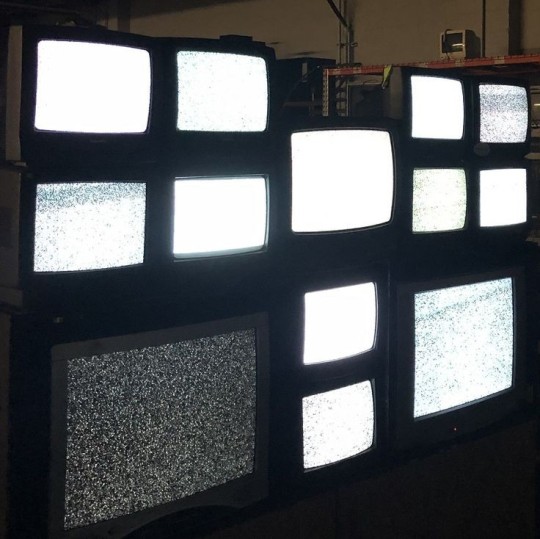#array
Text

510 notes
·
View notes
Text

YOU'RE NOT PERFECT
153 notes
·
View notes
Text

Four of Eight
54 notes
·
View notes
Text

Array supercharge
@variabel-y what do u think?
25 notes
·
View notes
Text

‘Tres Generaciones, Tres Patrias’
Work by Angurria in Temple-Beaudry, painted at the Array offices for 2019’s National Day Of Racial Healing.
#Angurria#avaduvernay#array#mural#art#laart#urbanart#streetart#lastreetart#streetartla#losangeles#templebeaudry
7 notes
·
View notes
Photo

My photography, please leave credit. :)
#autumn#fall#autumnal#array#garden#nature#dreamy#leafs#leaves#sunny#light#green#original photography#mine#colorful
18 notes
·
View notes
Text
-IF I- UPDATE XVII-644-19

New page of my webcomic, IF I, is up.
Basma gets a bit fed up with Vahn's hero worship and let's a little secret slip...
Also heads up, there will be no comic this weekend as I will be gone at Anime Boston. But stay tuned for next Tuesday!
#if i#if i (comic)#if i (webcomic)#comic#webcomic#update#chapter 17#array#alien#aliens#seraph#seraphim#basma#my characters#my art#my comic#my webcomic#surreal#fantasy#adventure#drama
5 notes
·
View notes
Text





have you guys seen my programming ocs
#art#doodle#oc#programming#programming ocs#string#char#void method#vr method#array#double#int#if#else if#else
9 notes
·
View notes
Text

7 notes
·
View notes
Text

A (save-breakingly glitched) frog friend!
3 notes
·
View notes
Text
お問い合わせ
https://matchingapp.wpx.jp/contact/
お問い合わせ
2 notes
·
View notes
Photo

Elk Shepherd's Pie Recipe
This a savory dish filled with ground elk, an array of vegetables, and delicious mashed potatoes. 1/4 teaspoon Italian seasoning, salt and pepper to taste, 1/4 teaspoon garlic powder, 2 tablespoons butter, 1/2 pound ground elk meat, 1 parsnip peeled and diced, 1 small onion chopped, 1 tablespoon butter melted, 4 large potatoes peeled and cubed, 2 cups frozen mixed vegetables, 1/2 cup half-and-half cream
3 notes
·
View notes
Photo

Aphasia
The first chapter of Aphasia by Carrie O’Kaye and Clay. Click on an image to view in a slideshow format.
Aphasia Chapter 1: Prelude
Pages 1 to 8: Carrie O’Kaye, Pages 9 to 10: Clay
When we first agreed to do Aphasia together back in 1998, Carrie dropped these first eight pages on me and I had to continue from there, so it was Carrie who really came up with the concept and the characters. Although I only had two pages in the first chapter, I would do more in subsequent ones.
Also notable is the quality of the images. Back in 1998 bandwidth was everything, so having files less than 100K was important. Because of this, the pages were small and the image quality was really poor. Although I still have the originals for my parts, I don’t have them for Carrie’s.
All Aphasia on claycomix:
Chapter Three: Waltz
View Original Post: https://wp.me/P3KYMB-t3q
4 notes
·
View notes
Text

Torso structure
49 notes
·
View notes
Text
Normally I just post about movies but I'm a software engineer by trade so I've got opinions on programming too.
Apparently it's a month of code or something because my dash is filled with people trying to learn Python. And that's great, because Python is a good language with a lot of support and job opportunities. I've just got some scattered thoughts that I thought I'd write down.
Python abstracts a number of useful concepts. It makes it easier to use, but it also means that if you don't understand the concepts then things might go wrong in ways you didn't expect. Memory management and pointer logic is so damn annoying, but you need to understand them. I learned these concepts by learning C++, hopefully there's an easier way these days.
Data structures and algorithms are the bread and butter of any real work (and they're pretty much all that come up in interviews) and they're language agnostic. If you don't know how to traverse a linked list, how to use recursion, what a hash map is for, etc. then you don't really know how to program. You'll pretty much never need to implement any of them from scratch, but you should know when to use them; think of them like building blocks in a Lego set.
Learning a new language is a hell of a lot easier after your first one. Going from Python to Java is mostly just syntax differences. Even "harder" languages like C++ mostly just mean more boilerplate while doing the same things. Learning a new spoken language in is hard, but learning a new programming language is generally closer to learning some new slang or a new accent. Lists in Python are called Vectors in C++, just like how french fries are called chips in London. If you know all the underlying concepts that are common to most programming languages then it's not a huge jump to a new one, at least if you're only doing all the most common stuff. (You will get tripped up by some of the minor differences though. Popping an item off of a stack in Python returns the element, but in Java it returns nothing. You have to read it with Top first. Definitely had a program fail due to that issue).
The above is not true for new paradigms. Python, C++ and Java are all iterative languages. You move to something functional like Haskell and you need a completely different way of thinking. Javascript (not in any way related to Java) has callbacks and I still don't quite have a good handle on them. Hardware languages like VHDL are all synchronous; every line of code in a program runs at the same time! That's a new way of thinking.
Python is stereotyped as a scripting language good only for glue programming or prototypes. It's excellent at those, but I've worked at a number of (successful) startups that all were Python on the backend. Python is robust enough and fast enough to be used for basically anything at this point, except maybe for embedded programming. If you do need the fastest speed possible then you can still drop in some raw C++ for the places you need it (one place I worked at had one very important piece of code in C++ because even milliseconds mattered there, but everything else was Python). The speed differences between Python and C++ are so much smaller these days that you only need them at the scale of the really big companies. It makes sense for Google to use C++ (and they use their own version of it to boot), but any company with less than 100 engineers is probably better off with Python in almost all cases. Honestly thought the best programming language is the one you like, and the one that you're good at.
Design patterns mostly don't matter. They really were only created to make up for language failures of C++; in the original design patterns book 17 of the 23 patterns were just core features of other contemporary languages like LISP. C++ was just really popular while also being kinda bad, so they were necessary. I don't think I've ever once thought about consciously using a design pattern since even before I graduated. Object oriented design is mostly in the same place. You'll use classes because it's a useful way to structure things but multiple inheritance and polymorphism and all the other terms you've learned really don't come into play too often and when they do you use the simplest possible form of them. Code should be simple and easy to understand so make it as simple as possible. As far as inheritance the most I'm willing to do is to have a class with abstract functions (i.e. classes where some functions are empty but are expected to be filled out by the child class) but even then there are usually good alternatives to this.
Related to the above: simple is best. Simple is elegant. If you solve a problem with 4000 lines of code using a bunch of esoteric data structures and language quirks, but someone else did it in 10 then I'll pick the 10. On the other hand a one liner function that requires a lot of unpacking, like a Python function with a bunch of nested lambdas, might be easier to read if you split it up a bit more. Time to read and understand the code is the most important metric, more important than runtime or memory use. You can optimize for the other two later if you have to, but simple has to prevail for the first pass otherwise it's going to be hard for other people to understand. In fact, it'll be hard for you to understand too when you come back to it 3 months later without any context.
Note that I've cut a few things for simplicity. For example: VHDL doesn't quite require every line to run at the same time, but it's still a major paradigm of the language that isn't present in most other languages.
Ok that was a lot to read. I guess I have more to say about programming than I thought. But the core ideas are: Python is pretty good, other languages don't need to be scary, learn your data structures and algorithms and above all keep your code simple and clean.
#programming#python#software engineering#java#java programming#c++#javascript#haskell#VHDL#hardware programming#embedded programming#month of code#design patterns#common lisp#google#data structures#algorithms#hash table#recursion#array#lists#vectors#vector#list#arrays#object oriented programming#functional programming#iterative programming#callbacks
6 notes
·
View notes
Text
SO I BUILT A FLASH DRYER FROM SCRATCH... using 12 halogen "work light" bulbs wired together.
WIFE:

In order to get an amperage draw that I found acceptable enough to run in "The Murder Shed" , I wired the 12 halogen bulbs in 4 groups of three, with each of the 3 being in series, with the 4 groups in parallel. I saw the concept of the "dim bulb limiter" and realized that I could limit the draw of the halogen similarly. So technically the bulbs are underpowered, which is ideal because I'm looking for short bursts of IR/heat, that get warm FAST and cover the whole area, whilst also blowing in air to eject the hot water vapor. Halogen lights unfiltered put out some amount of ultraviolet light, however since I'm underpowering them and I'm looking for the lower end of the spectrum anyways, that's not really a huge hazard. I'm almost done, but the hardest part so far has been getting it on a stand that can swing in and out of the way while I'm screen printing.
9 notes
·
View notes